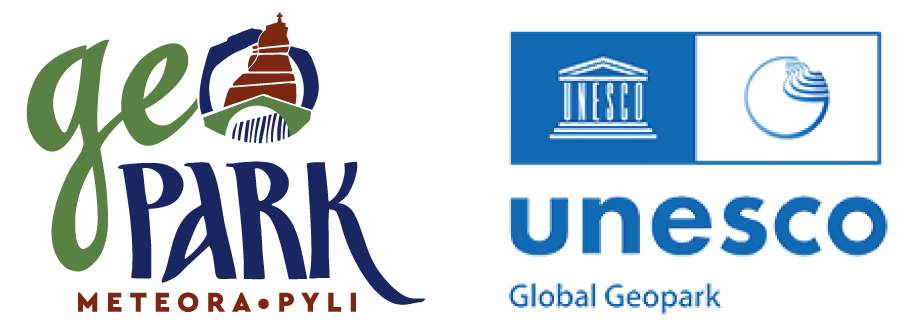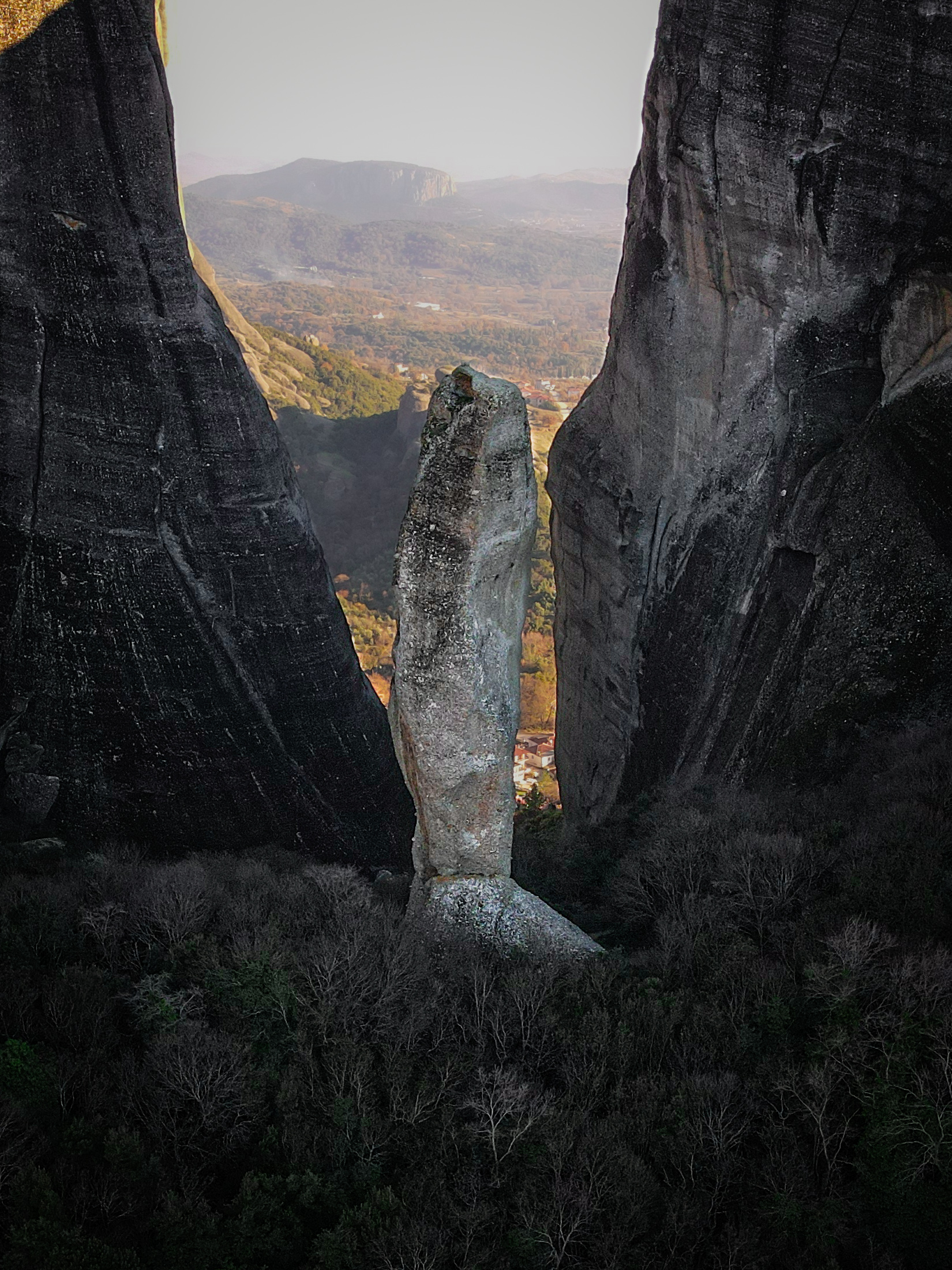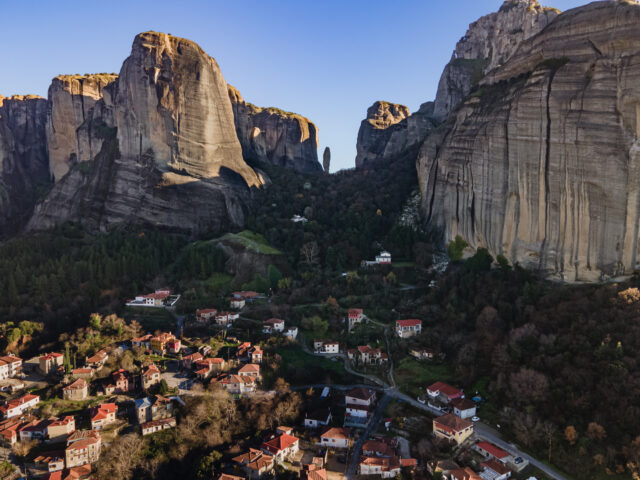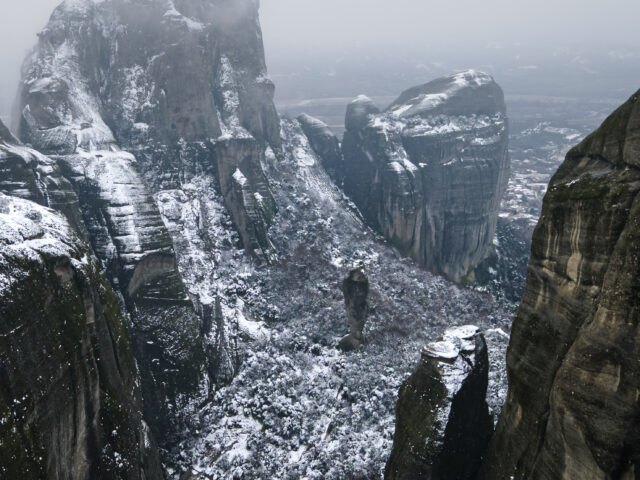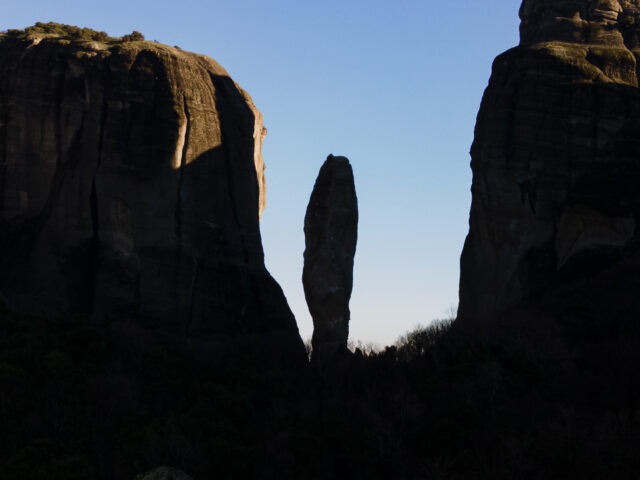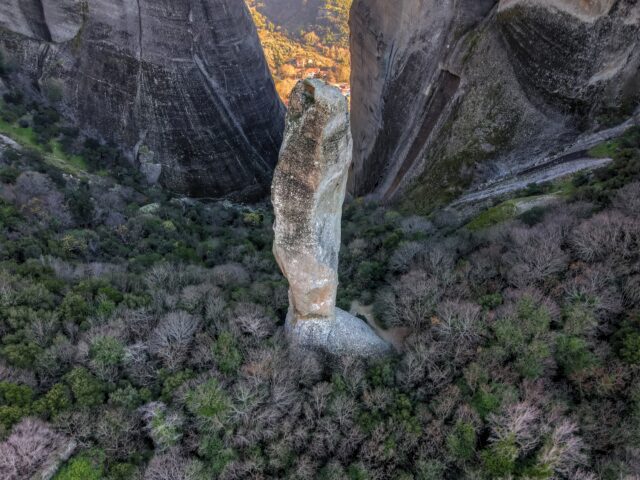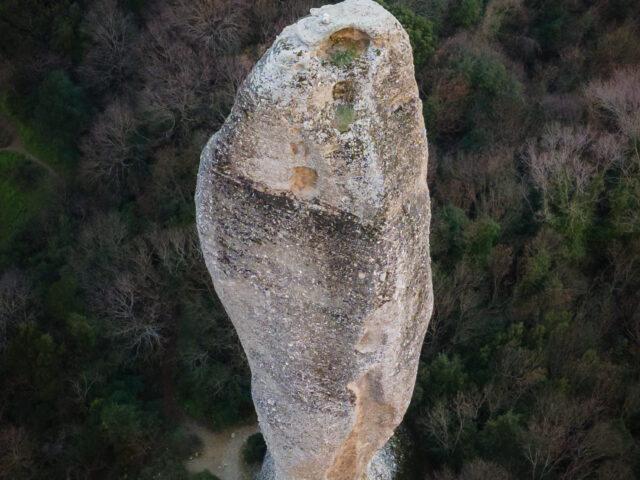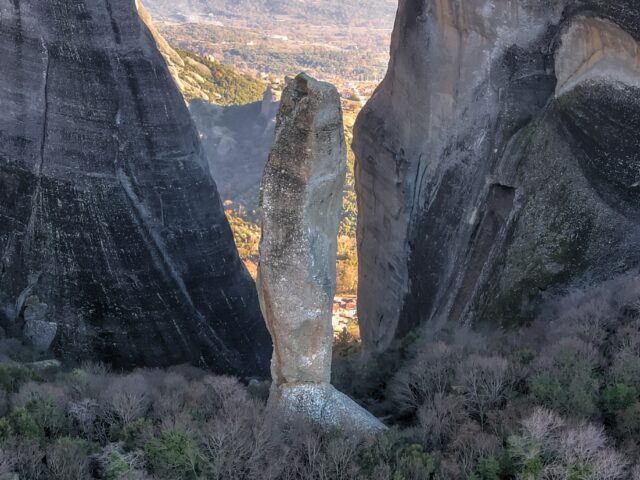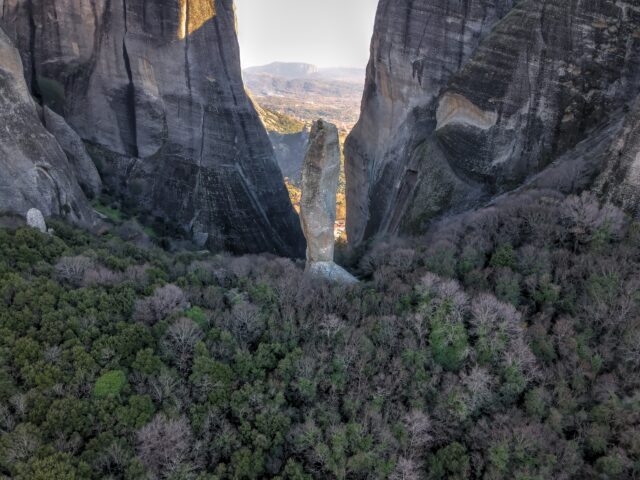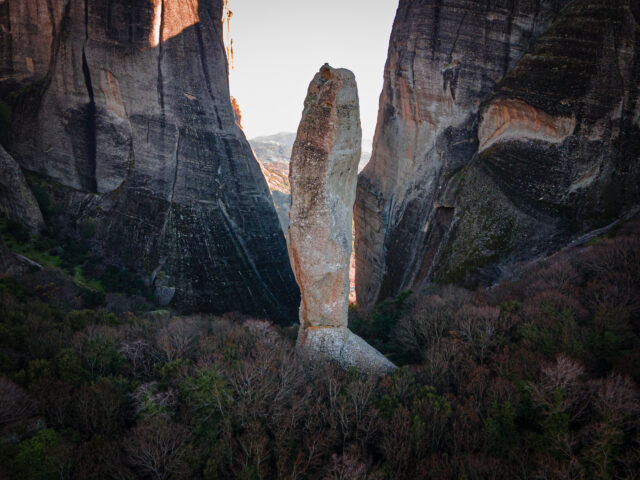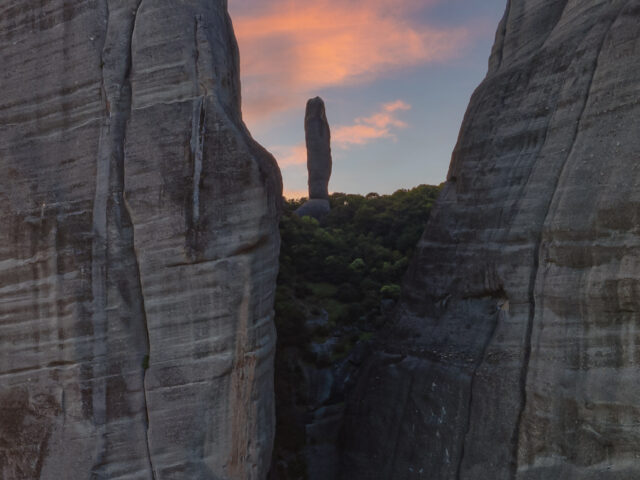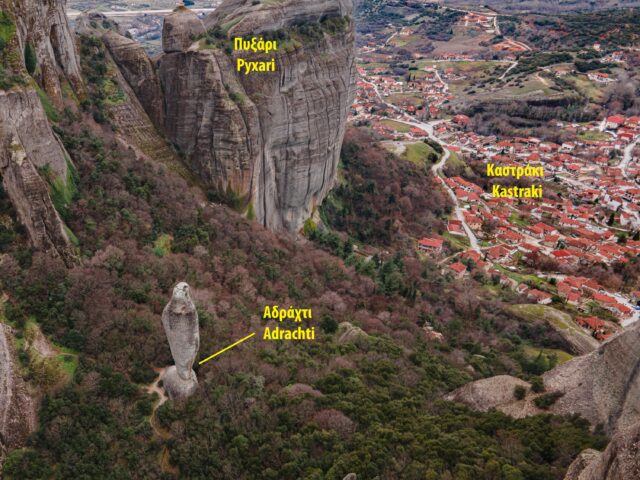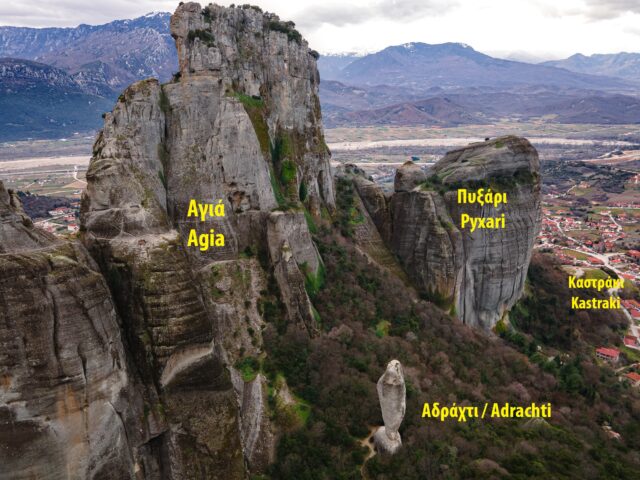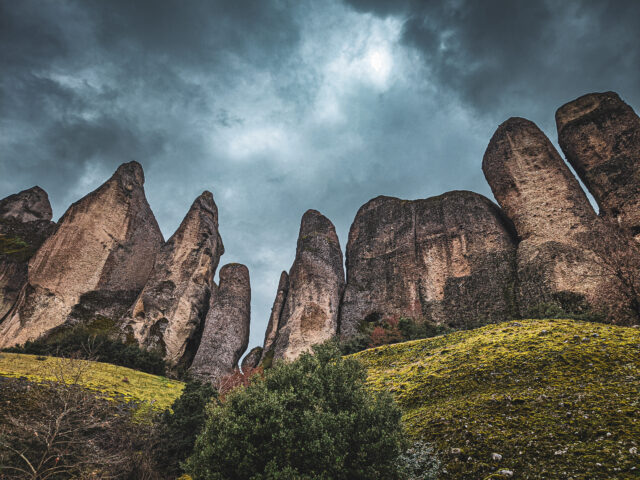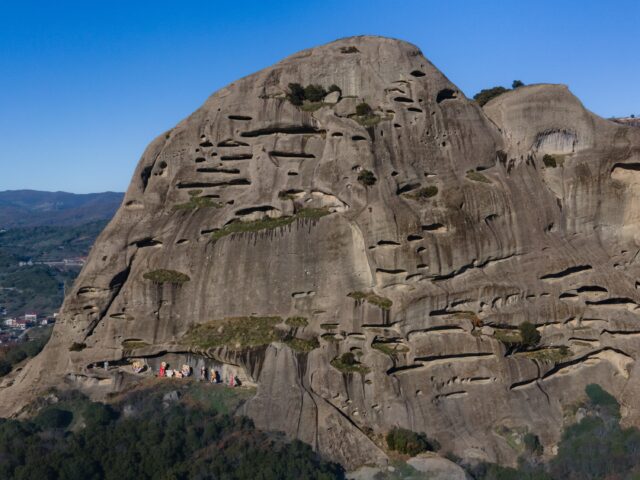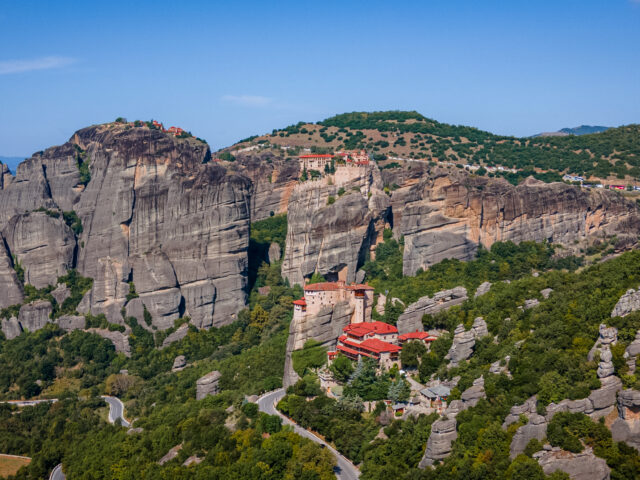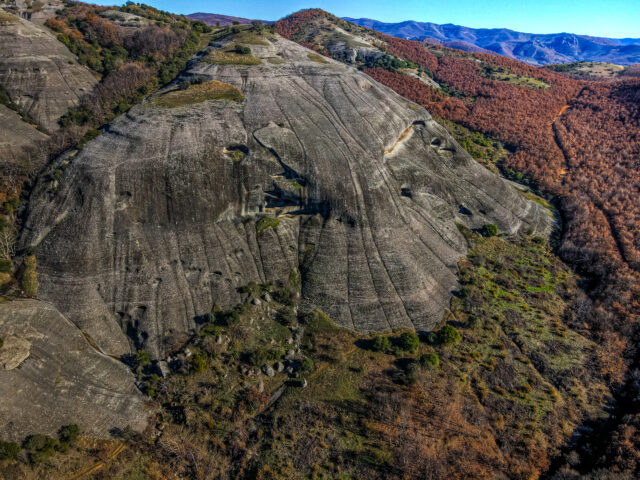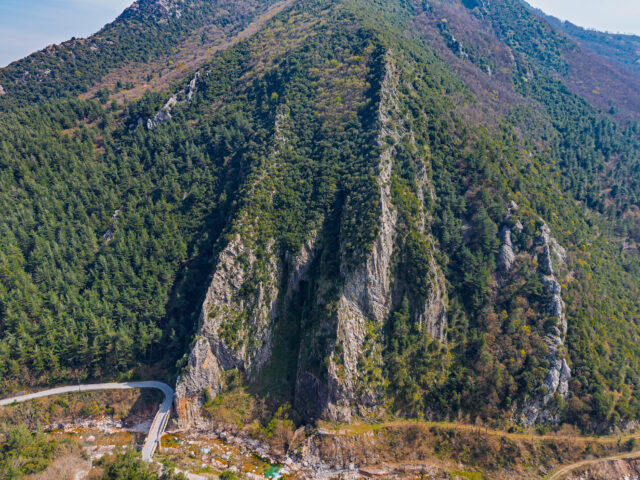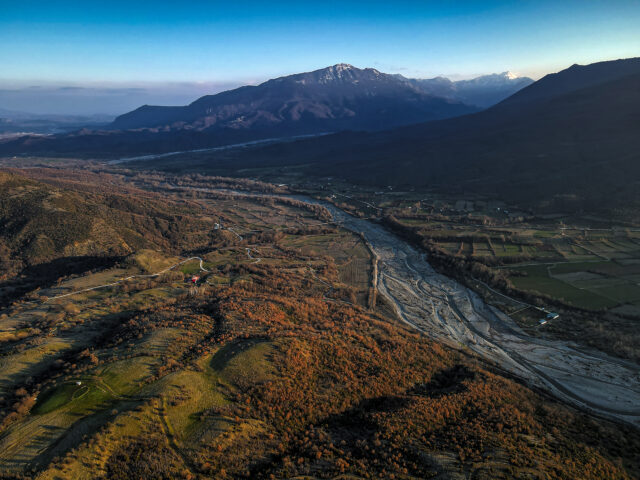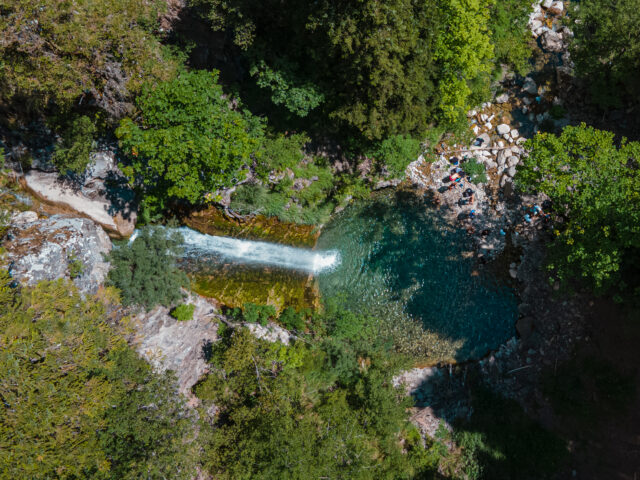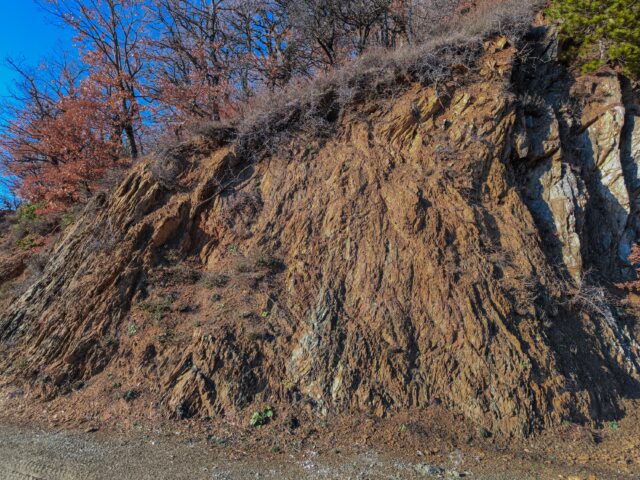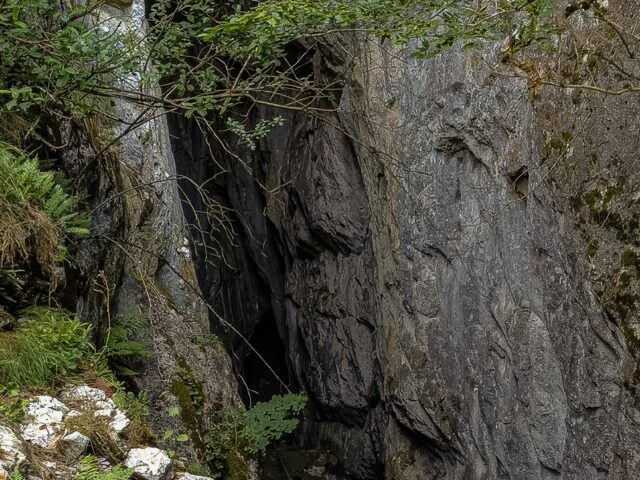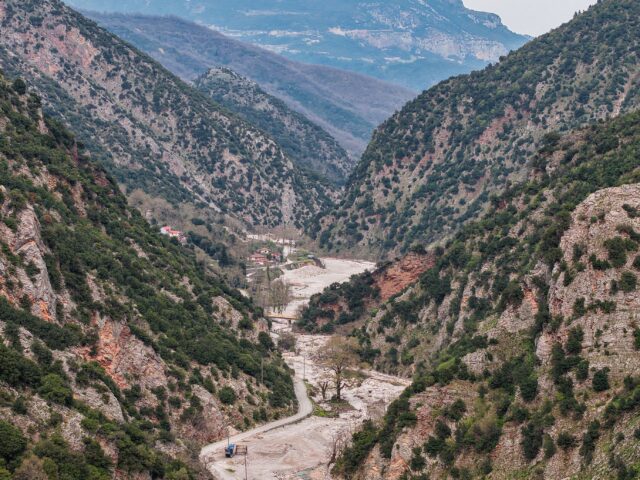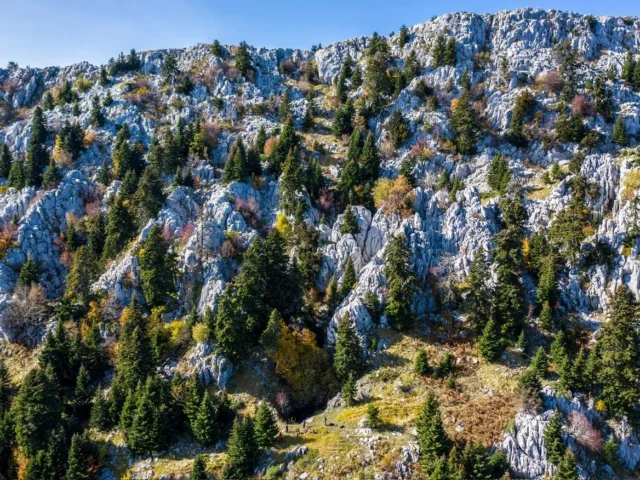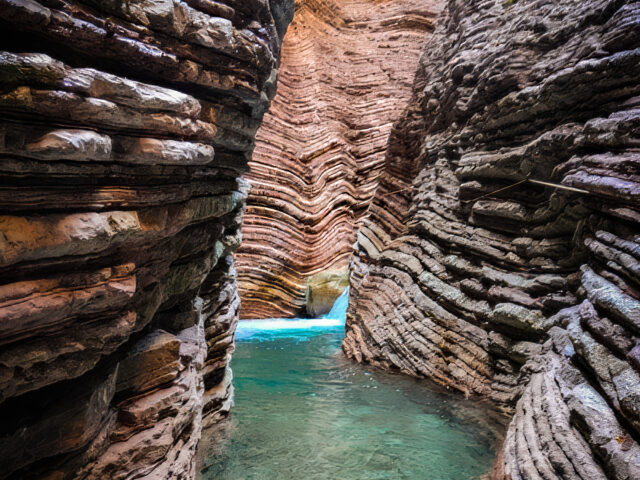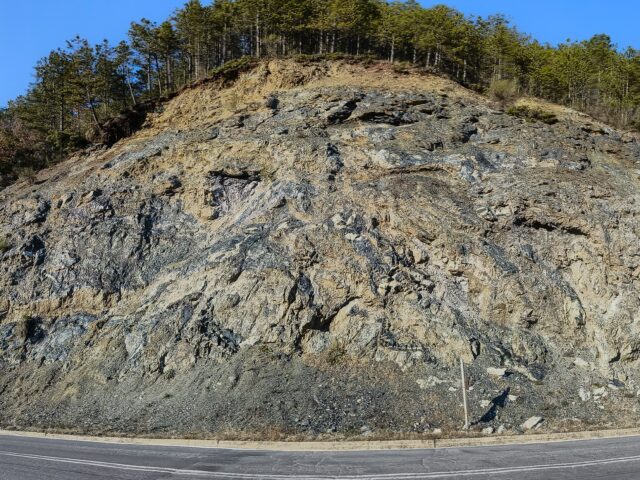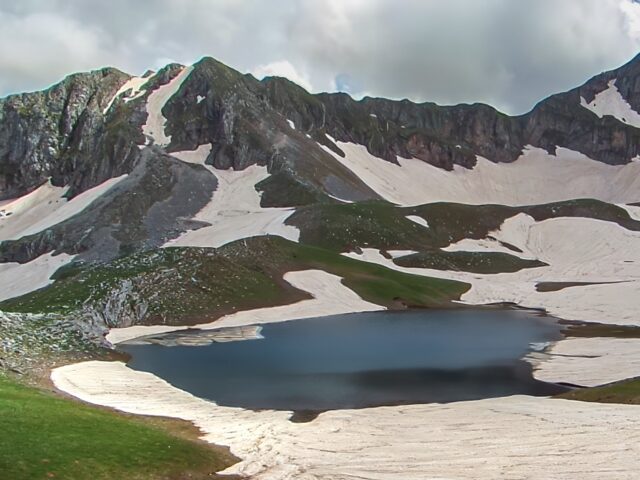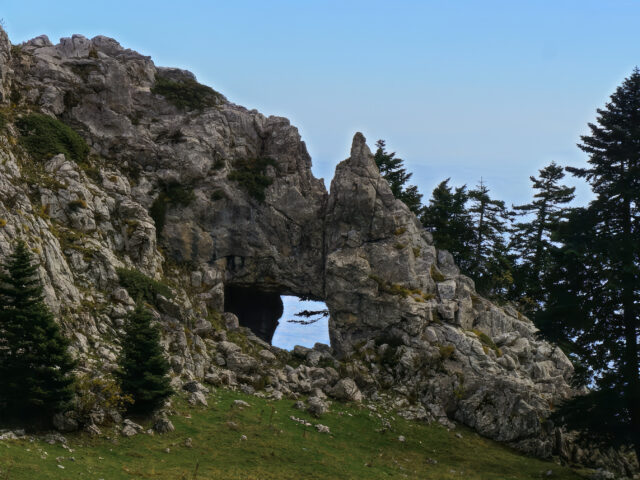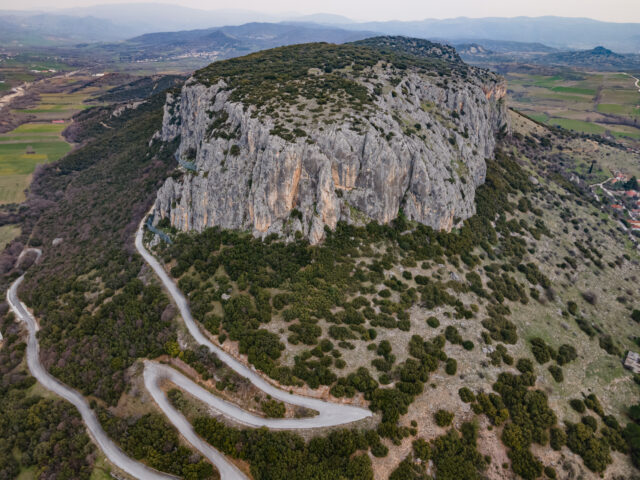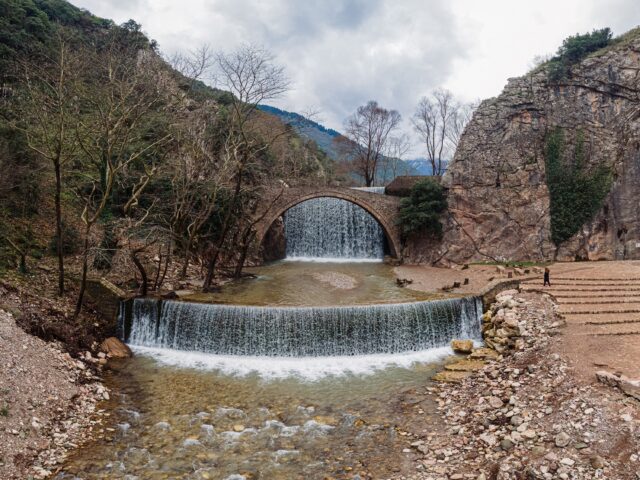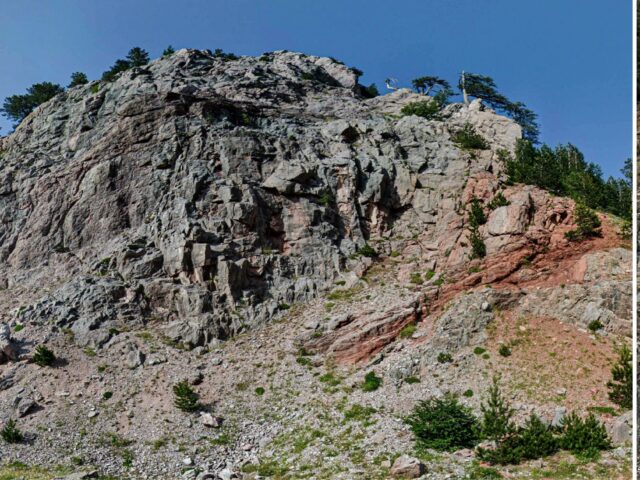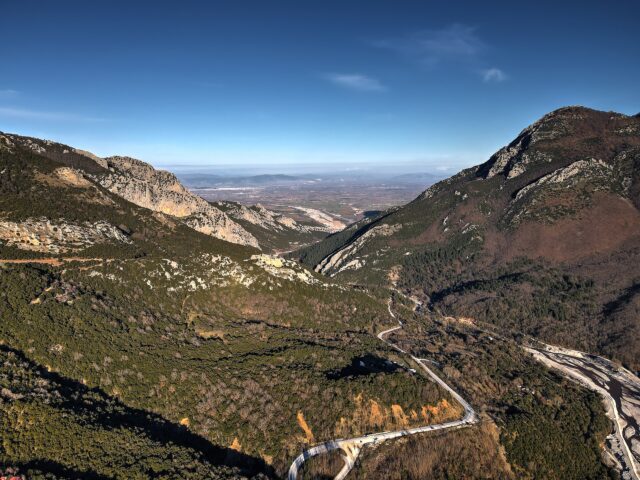“Adrachti” Landform
Address
Kalambaka 422 00
GPS
39.71353625727, 21.626306125858
Among the rock formations of Meteora, an impressive styloid rock formation that resembles a stone needle stands out. “Adrachti” (Needle or Spindle) as it has been known through recent history, is a single pillar located south of Kastraki among the large rocks of Meteora, such as Modi and Agia.
Meteora rocks consist of the Meteora Conglomerates, a series of cohesive conglomerates and sandstone layers, part of the Pentalophos-Meteora Formation of Late Oligocene-Late Miocene age (10-30 million years). Together with the Tsotili, Eptachori and Krania-Rizomatos Formations, they constitute deposits of a shallow sea, the Meso-Hellenic Trench, which was formed east of Pindos 40 million years ago. Today the rocks of the Meso-Hellenic Trench occur in a NW-SE development zone from Kastoria to the Thessaly plain. The Pentalophos – Meteora Formation occurs in the Meteora – Pyli Geopark from the northern limits of the park with the prefecture of Grevena to Sarakina and Peristera in the south. The Meteora Conglomerates are Gilbert-type deltaic deposits. The conglomerates and sandstones (turbidites) were deposited 10-20 million years ago underwater, at the mouths of large rivers from the northernmost part of the Meso-Hellenic Trench. Gilbert-type deltaic deposits are also found in large areas in the northern part of the Peloponnese (age >5 million years) and are currently deposited underwater in the Gulf of Corinth (mouths of the Selinitis, Vouraikos rivers, etc.). The impressive rock formations such as the rocky pillars of Meteora were created by tectonic deformation and erosion. Tectonic deformation caused the fragmentation of the conglomerate formations with faults and fractures. Subsequently, the action of water circulating in the openings of the cracks, the ice in winter causing the cracks to widen, and the wind formed steep ravines, separating the rocky masses that resemble towers and obelisks. Adrachti today is a remnant of a larger part of the Meteora rock. Its age in its current form is unknown, but it is depicted in 18th-century copper engravings.
The approach to the “Adrachti” geomorph is on foot, following the path from Kastraki. The route starts from the square and playground of Kastraki, and crosses the alleys of old Kastraki uphill to the church of Agios Nikolaos. The path from Agios Nikolaos to the old Panagia has wooden steps and the last part before the rock of Adrachti is dirt, and leads us in about thirty minutes to the impressive rock of Adrachti. From this point, the view is magnificent with the high rocks (Agia, Pyxari, Modi, Sourloti) of Meteora rising around the visitor and the settlements of old Kastraki and old Kalambaka on the other side that spread out lower.
